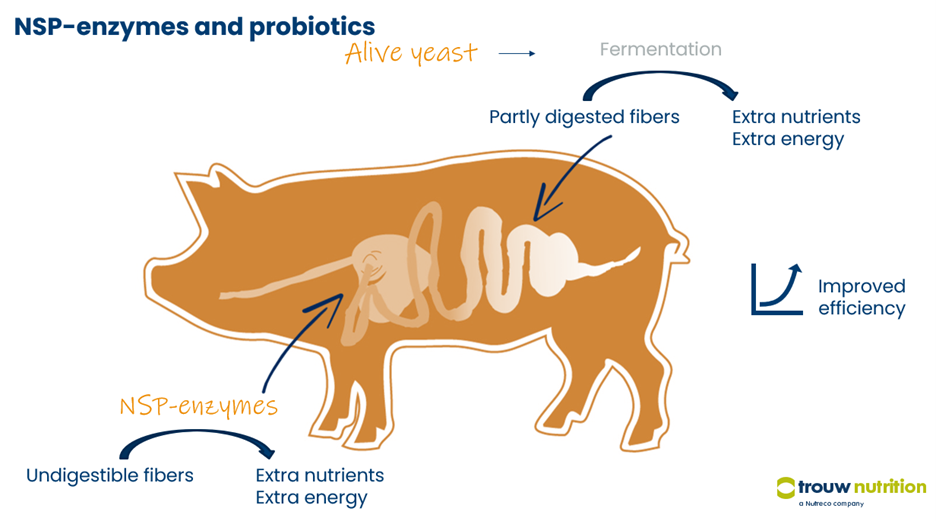
Improved efficiency by addressing heat stress in lactating sows: recent trial reveals promising results
Summer is back in the country. The rising temperatures outside are also causing rising temperatures in the barn. As a result, pigs have different nutritional requirements during this period of heat stress. They adapt their behavior to the higher barn temperatures. For example, they will eat less, drink more and decrease activity. This has a negative effect on lactating sows and for piglets in subsequent litters.

To cool down, animals send more blood from the intestines to the skin surface. This can cause damage to intestinal cells due to lack of oxygen. Thus, nutrient absorption decreases and the pig becomes more susceptible to pathogens ("leaky gut syndrome"). Fortunately, adding antioxidants and osmogerulators helps prevent the negative effects of heat stress in pigs.
Management measures that can be taken:
- Feed in the cooler hours
- Provide cool and fresh drinking water
- Properly adjusted ventilation
Nutritional measures:
- Obtain energy from fat instead of starch
- Concentrating the feed
- Adding antioxidants and osmoregulators with NutriCool
Heat stress in the lactating sow: the effects
Periods of heat stress negatively affect milk production in sows, either through reduced feed intake or through a direct effect on mammary gland metabolism (Silanikove et al., 2009). Reduced feed intake in sows logically affects the weight gain of piglets during the suckling period. Heat stress during lactation additionally affects fertility (Koketsu et al., 1996). These effects most likely result from a negative energy balance, where during lactation the energy required for body metabolism is higher than the sow's actual energy intake (Hunter et al., 2004). As a result, during periods of heat stress, follicle sizes are smaller and circulating hormones are disrupted (e.g., decreased blood insulin and IGF-1, increased blood NEFA). Smaller follicles have lower quality and cause a delay in return to oestrus and increased occurrence of anoestrus (Lucy, 2001).
The fact that the sow will take in less feed during times of heat stress is unavoidable. Trouw Nutrition recently conducted a trial with lactating sows that looked at the effects of increased feed efficiency on sow condition, piglet performance and fertility effects in the subsequent litter. In the trial, an NSP enzyme and a probiotic were added to improve fiber digestion in the large intestine. This helps to extract more energy from the feed during self-limited feed intake, thereby increasing feed efficiency.

Recent trial of lactating sows shows effects efficiency improvement
A summer 2022 trial of 200 lactating TN70 sows showed that adding an NSP enzyme (Axtra XB) and probiotic (Levucell SB) improves feed utilization and can mitigate the negative effects of high barn temperatures.
Sows in the experimental group lost less condition during the lactation period while weaning weights remained the same. On average, sows from the trial required approximately 5 kg less gestation feed for recovery.
After lactation, fewer sows from the experimental group were disposed of (14% vs. 18%). Sows from the trial group had on average 1 piglet total born more in the next litter. Interestingly, especially in the older sows (parity 5 and older) the number of total piglets born went up instead of down.

The benefits of this heat stress approach at a glance:
- Less condition loss
- Less gestation feed needed for recovery (5 kg on average)
- Less shedding of sows (14% vs. 18%)
- +1 piglet in the next litter
- Increase in total number of piglets born in sows with parity >5
Want to know more about the latest insights on summer management of lactating sows?
